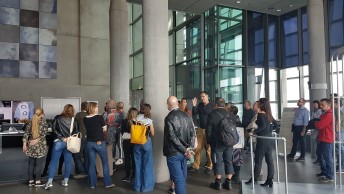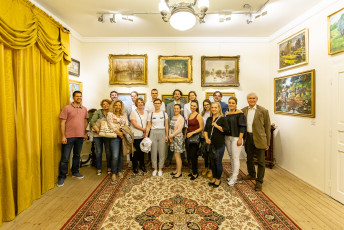CCI STRATEGies AND ACTION PLANs
CCI REPOSITORY HANDBOOK
Summary of the CCI Repository (178 KB)
CCI Repository handbook in pdf (19 625 KB)
PILOTS of STIMULART
The StimulArt project PILOTs are successfully implemented. The PILOTs are mostly related a) to turn cultural heritage assets into creative products and services by developing local culture-based creativity and improving entrepreneurial and individual skills; b) to revitalize abandoned and underutilized infrastructure and urban spaces to be reintroduced as venues hosting or incubating CCI activities; c) to create a regional reference point for CCI start-ups and other innovators.
- PILOT project of JÁSZBERÉNY (Summary and final results of the PILOT + final pilot evaluation + pilot business plan /HUN/)
- PILOT project of KAMNIK (Summary and final results of the PILOT + Annex1 + BARUTANA executive summary+ final pilot evaluation)
- PILOT project of VITTORIO VENETO (Summary and final results of the PILOT + Executive summary and report + final pilot evaluation)
- PILOT project of AMBERG (Summary and final results of the PILOT + final pilot evaluation)
- PILOT project of NAUMBURG (Summary and final results of the PILOT + Pilot feasibility study in GERMAN/ENGLISH + Festival report + Executive summary and report + final pilot evaluation)
JOINT METHODOLOGIES, TeMPLATe
and guidelines
REPORTS
TRAINING MATERIALS
Newsletters
In the e-Newsletters we are, among other things, giving information about the implementation of StimulArt activities of the partnership and CCI good practices from participating cities.
You can download the first e-Newsletter of STIMULART project in the next languages:
English Slovenian Hungarian German Italian
You can download the second e-Newsletter of STIMULART project in the next languages:
English Slovenian Hungarian German Italian
You can download the third e-Newsletter of STIMULART project in the next languages:
English Slovenian Hungarian German Italian
You can download the fourth (last) e-Newsletter of STIMULART project in the next languages:
News/Events (archive, selected)
ABOUT THE PROJECT
When compared to larger urban centres, mid-size cities are generally less successful in attracting high value-added, creative activities, innovative services and young talents. Economies of scale are only part of the reason. An outdated attitude towards funding and commercialising cultural and creative activities is another reason as well as a weak recognition of the creative potential of heritage and poor entrepreneurial skills of culture and creative industry (CCI) actors.
The STIMULART partner cities have a shared interest in enhancing CCI through a transformation of organisational and financing frameworks. They exploited during the project unexposed human and institutional capital, vacant urban infrastructure, and an obvious (but commercially often neglected) source of creativity: local culture.
The project combined macro- and micro-level interventions in a cohesive system. CCI actors were trained to adapt to a changing framework while industry requirements are fed back into policy development. The project built the capacity of CCI stakeholders in the participating cities with transnationally tested, universal tools and methods. These were made available in a comprehensive CCI repository. A transnational strategy and action plans were tested in pilot actions that include: a CCI mentoring system; a creative mechanism utilising vacant spaces; IT-based CCI networking; a fast-prototyping & user-testing facility; and a dedicated CCI Marketplace.
Project Partners
Our project has 9 partners from following countries:
Project duration
01.04.2019
31.03.2022
Stimulart IN NUMBERS
2.517.222 EUR
9 Project partners
4 COUNTRIES
5 PILOT ACTIVITIES
5 STRATEGIES AND
ACTION PLANS
1 CCI REPOSITORY
HANDBOOK




